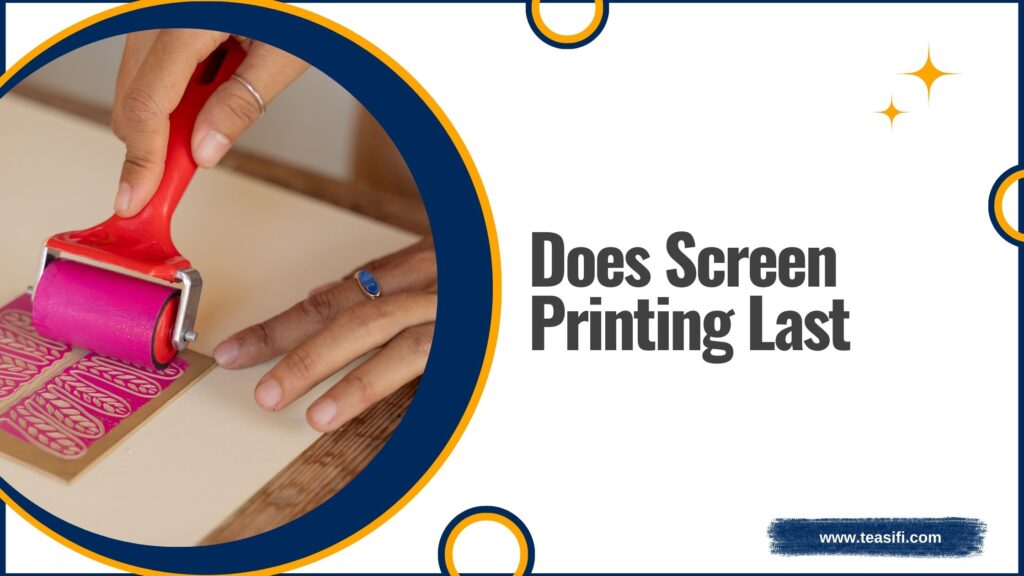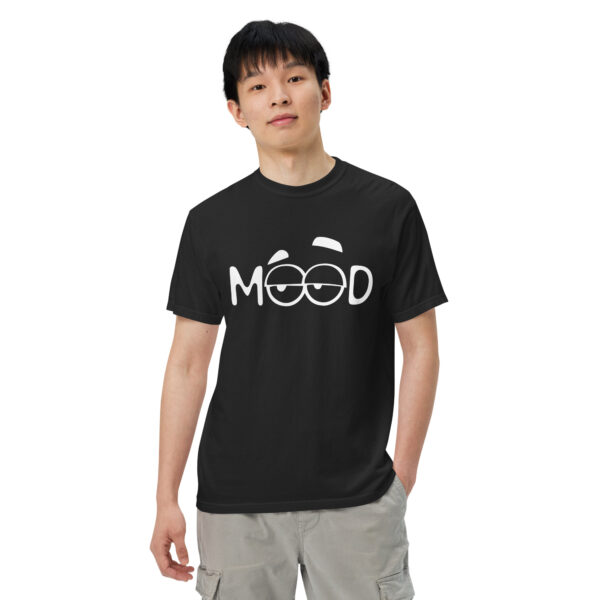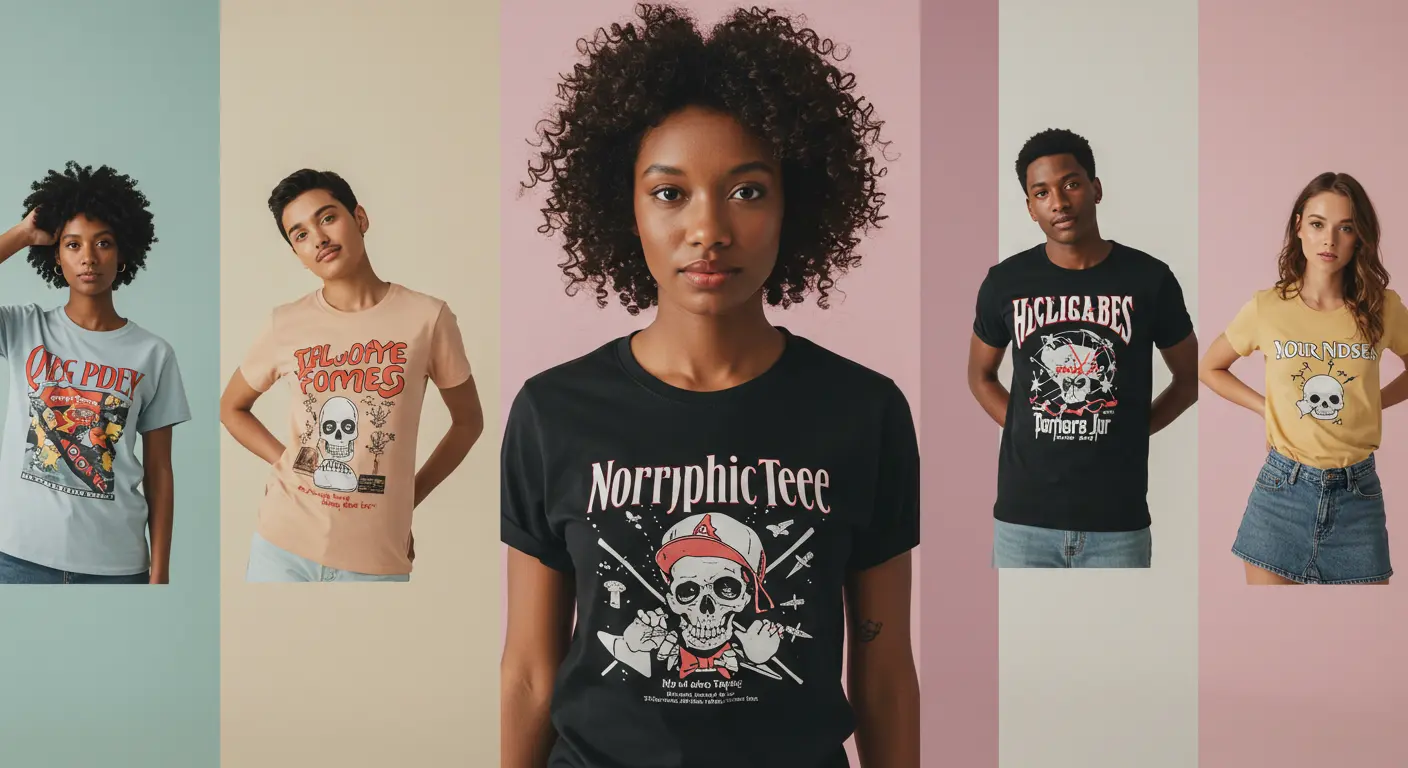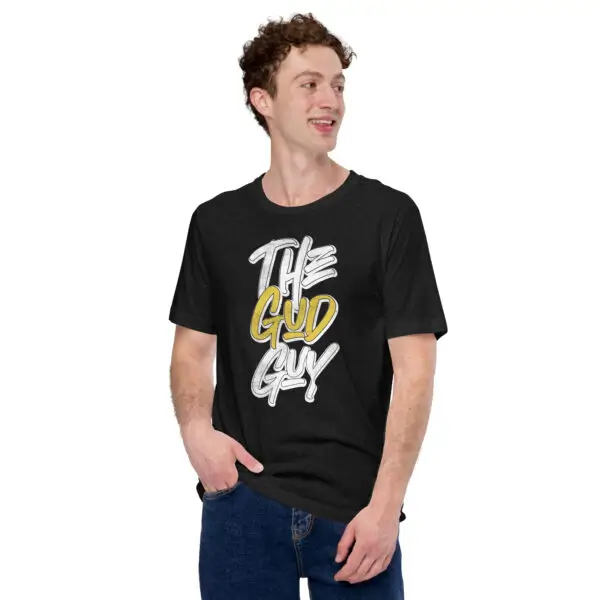When deciding between heat transfer printing and screen printing for promotional T-shirts or branded apparel, understanding the differences in durability, quality, and application is crucial.
Both methods whether it’s the precision of heat transfers or the longevity of screen prints offer unique benefits suited to specific needs.
From creating sports team uniforms with multi-colored graphics to crafting long-lasting designs on dark fabrics, the right choice ultimately depends on your target audience, budget, and the intended use of the product.
Table of Contents
ToggleWhat Is Heat-Transfer Printing?
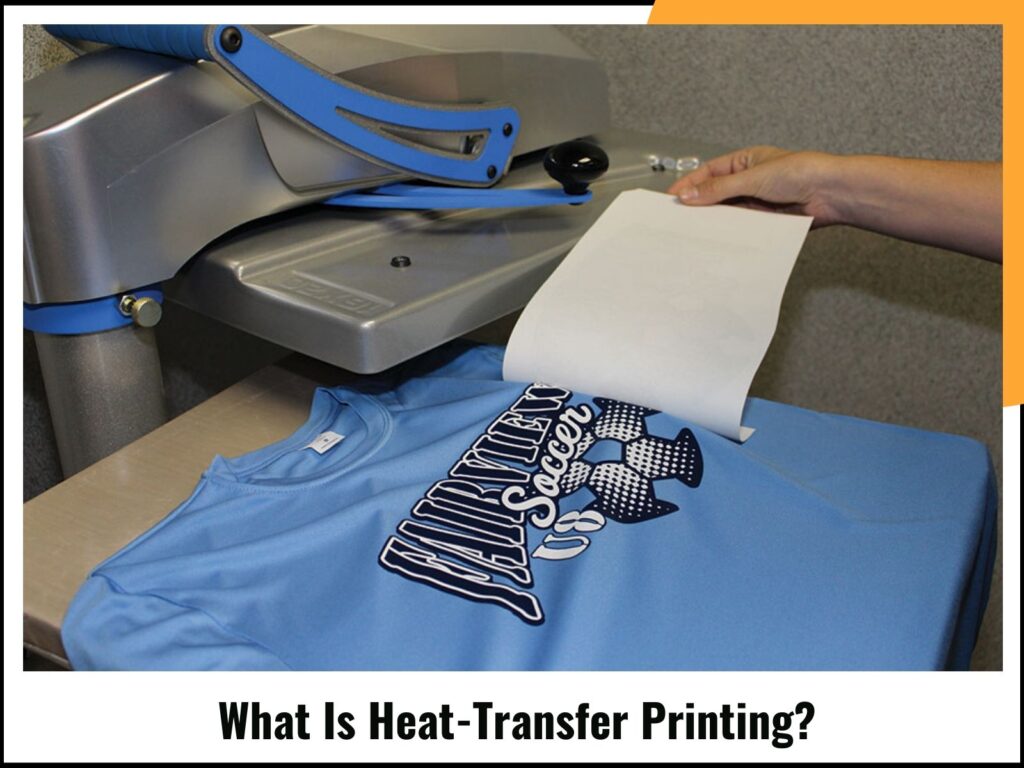
When it comes to customizing t-shirts or fabric items, heat-transfer printing is one of the most popular imprint methods.
It uses heat and pressure to transfer graphic images onto promo items, like sportswear jerseys or branded shirts.
There are two types: vinyl heat-transfer processes and digital print heat transfer, each with unique features.
Businesses, especially those producing promotional apparel, often choose this for its cost-effective setup and ability to handle smaller print runs with multi-colored graphics.
However, customer preference can also play a key role in deciding between this and other methods like screen printing.
How Does a Vinyl Heat Transfer Work?
In the vinyl heat-transfer process, a machine precisely cuts designs and letters from colored vinyl. These are pieced together onto t-shirts or other items, then pressed using a heat-press machine.
This technique is ideal for sportswear jerseys, slogans, and small designs with multiple colors.
However, while the designs are visually striking, they often result in a stiffer fabric feel compared to alternatives. Vinyl heat-transfer processes are particularly effective for promo items requiring quick turnaround times.
How Does Digital Print Heat Transfer Work?
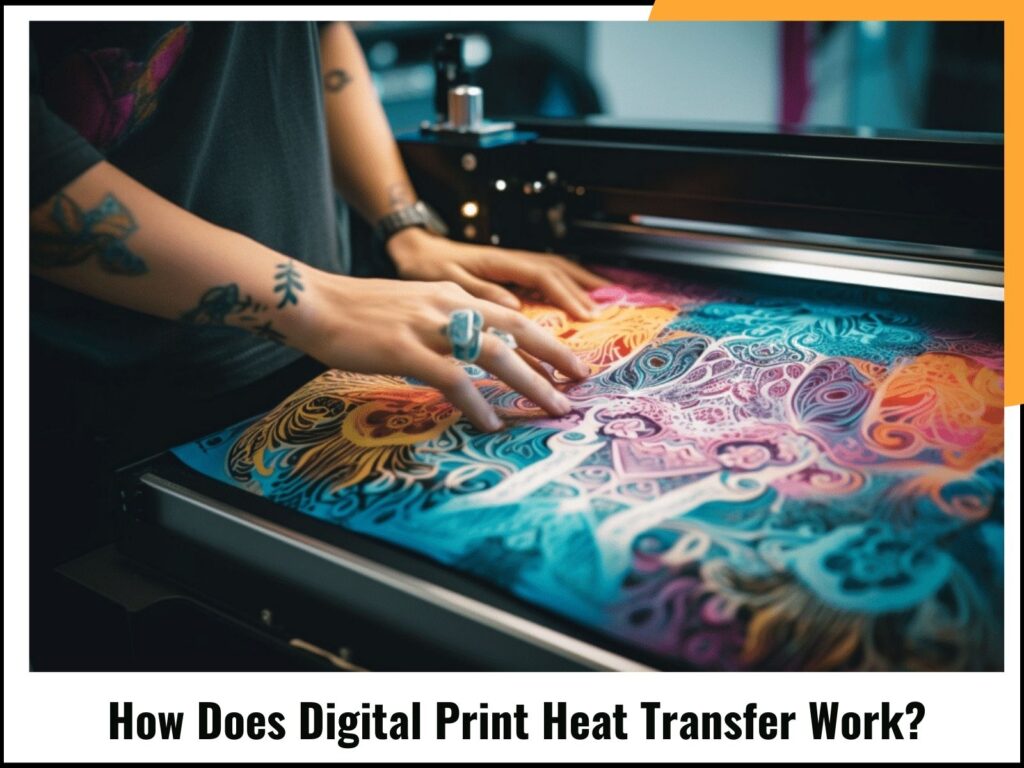
This method mirrors how a computer printer creates high-quality images but applies the design to garments instead of paper.
The process involves printing with solvent ink on high-quality paper, which is then heat-pressed onto the fabric.
This produces high-resolution images, perfect for complex designs with vivid colors. Digital print heat transfer is praised for its ability to replicate intricate artwork and achieve a vibrant appearance.
However, its durability is often outperformed by screen printing, as heat-transfers may crack or fade over time.
The Pros:
- Cost-effective for smaller print runs.
- Handles multi-colored graphics and complex designs.
- Produces high-resolution images with a clean and environmentally friendly process.
- Allows customization for different promo items, offering flexibility for target audiences.
The Cons:
- Limited durability; designs tend to fade or crack after multiple washes.
- Creates a stiffer fabric feel, especially noticeable on casual wear.
- Not suitable for darker shirts, as vibrant colors don’t stand out as effectively as with screen printing.
What Is Screen Printing on Shirts?

Screen printing, also known as silk screening, involves using screens, stencils, and ink to transfer designs onto fabric.
Dating back to ancient times, this method gained mainstream attention in the 1960s when artists like Andy Warhol popularized it.
Today, it’s a go-to choice for large orders of promotional apparel. The process includes creating a stencil from the design, spreading ink over the screen with a squeegee, and transferring the image onto the fabric.
How Long Does Screen Printing Last?
One of the standout features of screen printing is its durability. A well-executed print can last through 40–50 machine washes, especially when cared for properly.
Using a gentle cycle, washing shirts inside out, or opting for hand-washing can prolong the design’s life significantly.
The thick ink penetrates deeply into the fabric, making screen prints a long-term solution for branded shirts and promo items.
How Do Screen Printers Work?
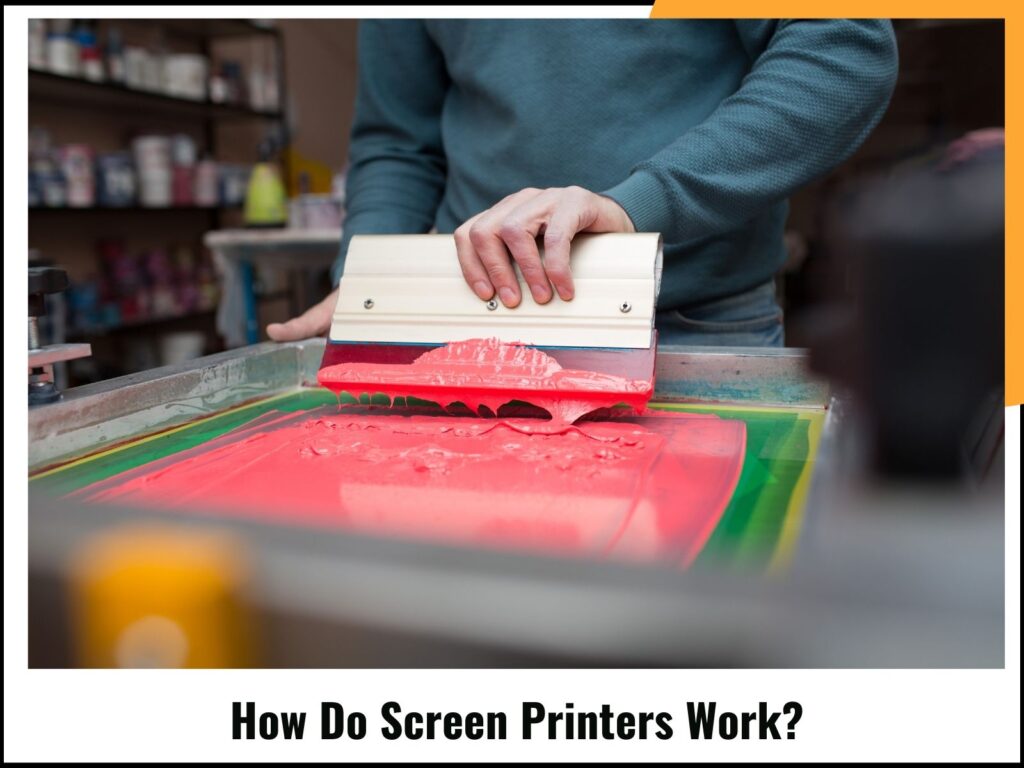
Screen printers use specialized equipment to create durable, vibrant designs.
process begins by preparing the mesh count, applying emulsion, and creating a stencil.
Once the screen is ready, special ink is applied with a squeegee to ensure even coverage.
method is more cost-effective for large orders due to the reusable designs created during the setup process.
While it requires more chemicals and equipment than heat-transfer printing, the results are often worth the investment.
Heat Transfer vs. Screen Printing Quality
Comparing the two, heat-transfer printing excels in producing high-resolution images and handling complex designs with multiple colors.
However, screen printing wins in durability and achieving vibrant colors on darker shirts. The ink in screen printing integrates into the fabric, while heat transfers sit on top, making them prone to cracking and fading.
HTV vs. Screen Printing — Which Is Better?

For sports team uniforms or customized designs, heat transfer vinyl (HTV) offers a quicker, easier process.
However, screen printing provides better printing quality and longevity, especially for large orders of branded shirts. Your choice will depend on your budget, target audience, and specific design needs.
Which Printing Method Is Best?
The ideal printing method depends on the project. For short-term use or multi-colored designs, heat-transfer printing is the cost-effective solution.
On the other hand, for long-lasting, vibrant designs on dark fabrics, screen printing stands out as the superior choice.
Conclusion
Choosing between heat-transfer printing and screen printing boils down to weighing priorities like durability, vibrant colors, and complex designs.
While screen prints excel in producing long-lasting designs ideal for large orders, heat transfers shine when handling complex artwork with multiple colors or short-term projects.
Each method has its place in creating high-quality, customized apparel, ensuring your promo items resonate with the desired impact for your brand.
FAQs!!
Q1: How Long Does Screen Printing Last?
Screen printing is known for its durability and can last for years with proper care.
The lifespan of screen-printed designs depends on factors like the quality of the ink, the type of fabric, and how the item is washed and maintained.
High-quality screen printing using premium inks can withstand regular use and washing without significant fading or cracking.
Q2: Is Screen Printing Better for Long-Lasting Designs?
Yes, screen printing is one of the best methods for creating long-lasting designs.
Unlike other printing techniques, the ink in screen printing is absorbed deeply into the fabric, creating a strong bond that resists wear and tear.
This makes it ideal for items that require frequent washing, such as t-shirts, hoodies, or uniforms.
Q3: Does Screen Printing Fade Over Time?
Screen printing can fade over time if exposed to harsh conditions, such as excessive sunlight, high heat during washing, or the use of strong detergents.
To preserve the vibrancy of your screen-printed designs, wash items in cold water, avoid using bleach, and air dry or tumble dry on low heat.
Q3: What Makes Screen Printing More Durable Than Other Printing Methods?
Screen printing stands out for its ability to create thick, vibrant designs with high durability.
Unlike methods like digital printing, which applies ink superficially, screen printing presses ink through a stencil onto the fabric.
This deeper penetration ensures that the design remains intact even after repeated washes and wear.
Q4: Can Screen Printing Handle Frequent Washing?
Yes, screen-printed garments are designed to handle frequent washing when proper care is taken.
Always turn the garment inside out before washing, use mild detergents, and avoid high-temperature drying to ensure the design remains in top condition.
Q5: Is Screen Printing Cost-Effective for Long-Term Use?
Absolutely! While screen printing may have a higher upfront cost, especially for bulk orders, its durability makes it a cost-effective choice in the long run.
The designs last longer, reducing the need for frequent replacements, making it ideal for businesses, events, or custom apparel needs.
Q6: What Are Common Issues with Screen Printing, and How Can They Be Avoided?
Common issues with screen printing include cracking, peeling, or fading. These problems usually arise from improper care or low-quality materials.
Using high-quality inks, printing on suitable fabrics, and following care instructions can prevent these issues and extend the life of the design.
Q7: How Does Screen Printing Compare to Vinyl Printing?
Screen printing offers superior durability compared to vinyl printing, especially for large designs or those exposed to frequent use.
While vinyl may peel or crack over time, screen-printed designs are more resistant to wear and maintain their appearance longer, making them a better choice for long-term applications.
Q8: Can Screen Printing Be Used on All Types of Fabrics?
Screen printing works best on natural fabrics like cotton or cotton blends, as they absorb ink well and create vibrant designs.
While it can also be used on synthetic fabrics, the results may vary depending on the material’s texture and composition.
Q9: What Care Tips Should I Follow for Screen-Printed Items?
To maintain screen-printed items, wash them in cold water with mild detergent, avoid using bleach, and dry them on a low heat setting or air dry.
Turning the garment inside out before washing can also protect the design from friction and fading.
Q10: Are Screen-Printed Designs Waterproof?
Screen-printed designs are not inherently waterproof, but they can resist mild exposure to moisture and washing when cured correctly.
For items exposed to outdoor elements, water-resistant inks and coatings can be used during the printing process.

